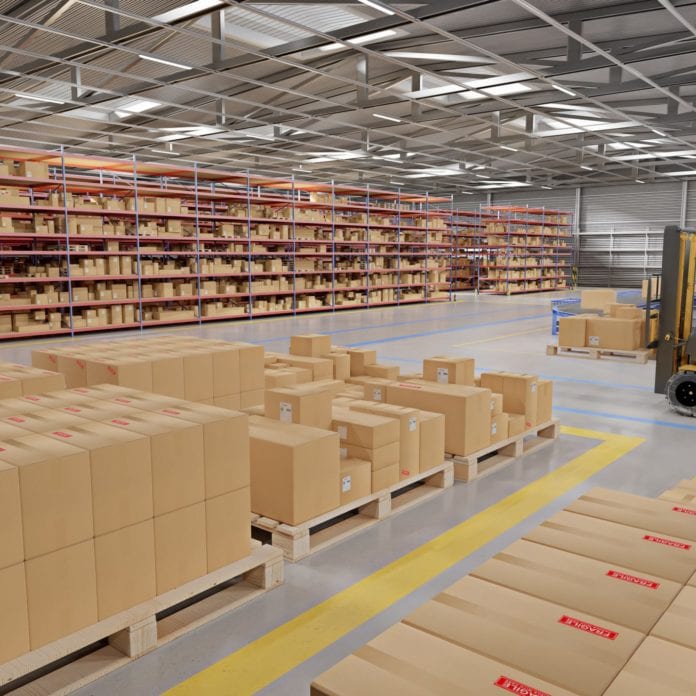The Industry 4.0 concept is driving the popularity of private 5G networks, which are also being increasingly adopted in the manufacturing and logistics space due to the lower costs of spectrum, Renu Navale, vice president in the Network and Edge Group and general manager of the Edge Platforms Division at Intel Corporation, said during a presentation at the 5G Manufacturing Forum—available on demand here.
“So a number of the use cases from Industry 4.0, around smart manufacturing, logistics, warehouse automation energies and utilities, smart grids, defect detection represent more than 60% of our use cases for private 5G,” the executive said.
Navale said that the warehouse automation market is forecast to reach $27 billion by 2025. “And by 2025, there will be more than 4 million robots operating and about 50,000 automated distribution warehouses. So, there will be a huge opportunity in our industry ecosystem for autonomous mobile robots (AMRs).”
The Intel executive also highlighted that 5G sets a new paradigm for AMRs by driving distributed compute efficiencies with its ultra-reliable low latency communications and high bandwidth capabilities.
“There’s a very nice cycle where edge computing is becoming more available and more popular. And this is driving down the costs of AMRs, because compute is more available closer to the source of the data being generated from the AMRs. And at the same time, even the cost of AMRs becoming more affordable, with warehouses planning to deploy hundreds of these AMRs,” she said.
Navale said that some of the tasks of the automated warehouses can be located on the AMRs, while some can be offloaded to the edge server. And then in certain cases, some of the tasks can go to the data center or the cloud.
According to Intel, some of the tasks that can be located on the AMRs include sensor ingestion, path planning and localization, obstacle avoidance, motor control, functional safety and navigation, while the tasks that can be offload to the edge server include remote interference, fleet management, mission management, battery management, traffic management and analytics.
“And our vision is that in order for us to enable this compute and AI functions in the AMRs, they really need to be based on latency and other requirements. And then there’s a logical division of these workloads across these different locations that can drive the best efficiencies as well as the best business value for enterprises.”
Explaining how Intel is currently enabling use cases utilizing AMRs, Navale noted that the chip maker “has a pretty diverse portfolio of CPUs and accelerators, including GPUs and NICs that can enable the offerings all the way from the device to the cloud.”
“On top of our silicone portfolio, we actually have significant amount of software offerings as well, that is used in order to enable these use cases with the autonomous mobile robots,” the executive added.
“We really have three key offerings that are actually used in these AMRs use cases. The first is called Edge Insights for AMR. This is our optimized software stack in the AMR platforms that has various building blocks such as simultaneous localization and mapping, which is used to really enable and control the autonomous mobile robots,” she said. The second software offering is Intel’s OpenVINO, which she described as its “toolkit with AI, computer vision and deep learning inferencing. This software accelerates vision inferencing for the images captured from the cameras located on the robots. That’s very critical for the AMR navigation on the factory floors, but also to make sure that the AMRs safely operate and coexist with humans on factory floors. Last but not least, is our Intel Smart Edge offering, which is used to manage and deploy the AMR applications,” Navale added.
Meanwhile, Walter Buga, CEO at Arendai, a San Diego based start-up focusing on the orchestration and automation of logistics centers and smart factories, said that 80% of warehouses are not automated and noted that many solutions aimed at automating warehouses work like silo solutions.
He said that Arendai’s Harmony 1.0 is a software solution for the automation of logistics and warehouse operations, which enables management of AMRs from different vendors, introduces expanded AI capabilities to AMRs using edge computing, implements digital twin for predictive maintenance and operations optimization and creates a safe environment for AMRs and humans collaboration.
The Harmony solution uses the Intel Edge Insights for Autonomous Mobile Robots on the AMR platforms and IntelSmart Edge on the edge platforms for deploying edge computing applications and global management and orchestration services for AMRs.

